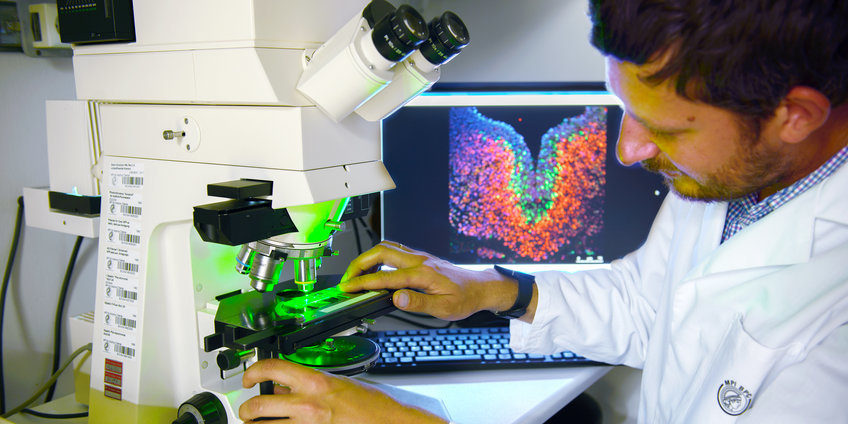
Research
How do nerve cells communicate with each other? How does a complex organism develops from a single egg cell? How does the cell solve logistic task? Or how does an organism regenerate? Scientists at our institute are on the trail towards unraveling the molecular processes that control and regulate complex life processes. However, observing these processes is not an easy feat. They take place in the nanocosmos of the cell and, therefore, are invisible to the eye. Standard microscopes can be used to detect bacteria or to observe individual body cells. But we can hardly find out anything about what is going on deep inside living cells.
A sharper view of animate and inanimate matter
One focus of our research work is thus to develop special methods that allow insights into the world of molecules. Ultra-high resolution fluorescence microscopy, nuclear magnetic resonance spectroscopy, cryo-electron microscopy, and computer simulations are some of the methods that are successfully used to take a close look at proteins– the tiny nanomachines of living cells. The aim is to uncover the tricks that proteins use to perform their many functions in the cell, for example as molecular motors, chemical factories, photocells, or sensors. Our researchers are also developing novel experimental tools based on short, laser-induced electron pulses to study the structural and electronic dynamics in solids, nanostructures, and surfaces.
How is the blueprint of life implemented?
Scientists here are investigating how the blueprints for proteins are first put into a readable format and are unraveling how the cellular protein factories – the ribosomes – work. Only when built correctly proteins can successfully fulfill their tasks in the cell. Researchers at our institute are further investigating in detail how quality control works in protein synthesis.
Understanding the function of brain and nerve cells
As a further focus, we want to elucidate fundamental molecular and cellular processes in the nervous system and decipher how pathological disorders arise. Important questions that the researchers are investigating are: What mechanisms control brain development? What role do channel proteins play in the transmission of signals within the cell and in the development of cancer? What are the molecular bases of learning and memory?
From solar energy to motion – molecular dynamics
Similarly, many phenomena in inanimate nature can be traced back to molecular processes. For example, many molecules, radicals, and atoms in the atmosphere react with each other after being generated and excited by solar radiation. Investigating their inner molecular dynamics is another branch of research at our institute.